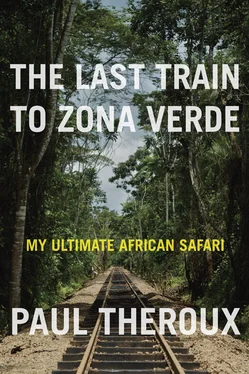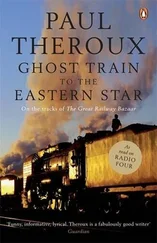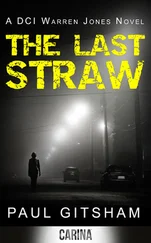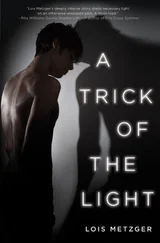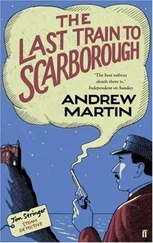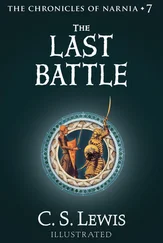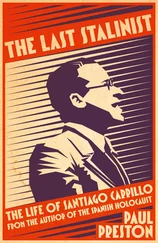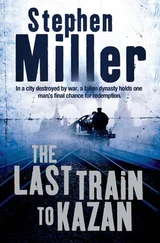It was growing dark, and I had to return to town. Phaks said, “But I haven’t shown you the last thing. It is a surprise.”
We drove back to Khayelitsha. Phaks’s surprise was a hotel, Vicki’s Place, run by a cheerful woman who advertised her home as “the smallest hotel in Africa,” just two rooms in a rickety two-story house. Many foreign journalists and travel writers had publicized Vicki’s Place. Vicki had the newspaper and magazine clippings, all mentioning her good humor, her effort, her enterprise in this township.
Phaks had yet another surprise: his van wouldn’t start. He sat wiggling the key in its slot, next to a fistful of wires he’d pulled out, hoping to find the problem.
“I’ll take the train,” I said.
“Bus is better.”
Ten years before I had wanted to take the train but had been discouraged from doing so by the clerk in the ticket booth.
“I’m taking the train,” I told Phaks.
He walked me through the back streets to the station and stayed with me and insisted on buying my ticket. When the train arrived we shook hands, we hugged, and he glumly said he’d have to return to his broken car.
“Keep your hand on your money,” he said.
The train was fairly empty because it was headed to the city. Returning from Cape Town, it would be full. I looked for potential muggers and, scanning the passengers in the car, caught the eye of the woman in the seat across from me.
“Why are you here?” she asked.
“Just looking.”
“Whites don’t come here. White people don’t live here,” she said with almost boastful conviction.
“But I’m here,” I said.
“Because you have that man to help you,” she said. She must have seen Phaks at the ticket office. She looked defiant, almost contemptuous. “You wouldn’t come here alone.”
“What are those lights?” I asked her, to change the subject, and pointed to the slopes of Table Mountain.
“Rondebosch, Constantia.” She had answered without looking up.
3. Cape Town: The Spirit of the Cape
NOTHING, APPARENTLY, is hidden in Cape Town: it is a city like an amphitheater. Its air breathing upon me sweetly, I sat in elegant, embowered, villa-rich Constantia, the district on the ridge I’d glimpsed the day before from the shacks of Khayelitsha. I was sipping a glass of sauvignon blanc in the majestic portico that was the tasting room of the main house at Constantia Glen Vineyard. From this vantage point I was able to see over the rim of my wine glass the poisonous cloud of dust that hung above the Cape Flats.
This visibility is one of the unusual features of Cape Town. The estates in its wealthiest enclaves, in the cliffy suburbs of the middle slopes of the mountain (Constantia, Rondebosch, Bishopscourt, Newlands), have views of the bleak horizontal profile of the suffering squatter camps and poor sprawling townships on the flatland below. The orderly green vineyards look down on brown muddled scrubland, and likewise, through the wide gaps in the plank walls or the rips in the blue plastic of the shacks in Khayelitsha it is possible to enjoy a panorama of university buildings and colonnades bulking on the heights of leafy Rondebosch.
Gated communities all over these highlands display signs warning any unwelcome intruder of 24/7 MONITORING AND ARMED RESPONSE, yet the poor have an unimpeded view of the rich, and vice versa. And each exposed person, squinting from this distance, looks passive and ubiquitous, like a sort of human vegetation.
The last time I’d been in Cape Town this winery did not exist — no vines, no casks, no activity except the mooing of cows. It had been a dairy farm, bought by an entrepreneur named Alexander Weibel, who’d had money and been interested in making wine. He plowed the hills and discovered that the land had clayey subsoil, had good water-holding capacity, and was rich in mica that would impart a “distinctive minerality,” as he called it, to the white wine. He planted vines, fenced them, staked them, pruned them. He invested in winemaking equipment, and in 2007 he had his first harvest. His wine was acclaimed. All this within ten years.
“I know that’s Khayelitsha,” I said, looking down at the townships on the Flats.
“And that’s Mitchells Plain,” the helpful woman in the wine-tasting portico told me. “And Guguletu, and over there, past Langa, is Bonteheuwel. Coloreds live there.”
Almost half the population of Cape Town was “colored.” The word had not been abandoned, and neither had “coolie” ( koelie ), for Indian; though “Bantu,” “Muntu,” “native,” “kaffir,” and “Hottentot” were execrated and condemned. A supermarket manager, technically “colored,” referred to one of his employees as a Hottentot while I was in Cape Town. (He pronounced the word the South African way, “Hot-not.”) Someone overheard this and reported him to a superior. He was fired on the spot.
The township of Bonteheuwel was created when the old, lively, multiracial District Six, in central Cape Town, was bulldozed, and the different races were dispersed and resettled, each to a specific place with its own racial hue. That was how, with refugees and exiles, Bonteheuwel grew. It is known as much for the distinctiveness of its people as for the violence of its crime. Much of Bonteheuwel is controlled by street gangs, and unlike the rest of the townships with their random shootings and beatings, the Bonteheuwel gangs are organized, with menacing names, and engaged in endless drug and turf wars. What Bonteheuwel had in common with the other townships was that, with all its hardships and disorder, it was also a place with a life of its own, where music and art filled the clubs and galleries, and where residents set off in the morning to work in central Cape Town or to attend school.
It was from Bonteheuwel that twenty-two-year-old Donna-Lee de Kock traveled each morning with her mother to the Old Mutual Insurance building in Pinelands — a one-and-a-half-hour commute — to attend the Tertiary School in Business Administration. That’s where I met Donna-Lee and her classmates. Ostensibly I was there to give a talk, but my deeper motive was to find out about the school and perhaps discover, after my time wandering around the townships, something promising.
This tertiary school, known by its acronym, TSiBA (the Xhosa word for “jump”), was good news. It was privately funded and nonprofit. I was particularly interested because the school had opened in 2005, since I had last been in South Africa. In the beginning 80 students were enrolled; there were now 320. No student was required to pay any tuition or fees, though it cost $10,000 a year to educate each one — for food, textbooks, transportation, computer, and writing materials. All the pupils were studying business administration or economics, and all were aiming to start businesses. The school’s mission was to make something good happen. I liked its self-sufficiency, and its being a purely South African endeavor — not an institution imposed by a meddling Mrs. Jellyby, a foreign philanthropist, or a parachuting pop star. Nor was it connected to any government or politician.
Allowances were made for students from deprived educational backgrounds. If someone applied and was found to be worthy of consideration, but deficient in any academic area, a “bridging year” was provided to sharpen needed skills and bring him or her up to standard. The aim of the school was to provide a college education for young people who otherwise would not have access to it — those who were too poor or out of touch or badly prepared.
The school was founded by Leigh Meinert, a young woman from Cape Town who had degrees from universities in South Africa and Great Britain. Idealistic, white, from a winemaking family, she was committed to making a difference in South Africa. Her father, Martin Meinert, learned winemaking at his family’s Devon Valley vineyard and also had a degree in viticulture and oenology from the University of Stellenbosch. With her father’s encouragement, Leigh Meinert worked on a plan for higher education in South Africa that would reach out to ambitious, intelligent, but overlooked youths.
Читать дальше
